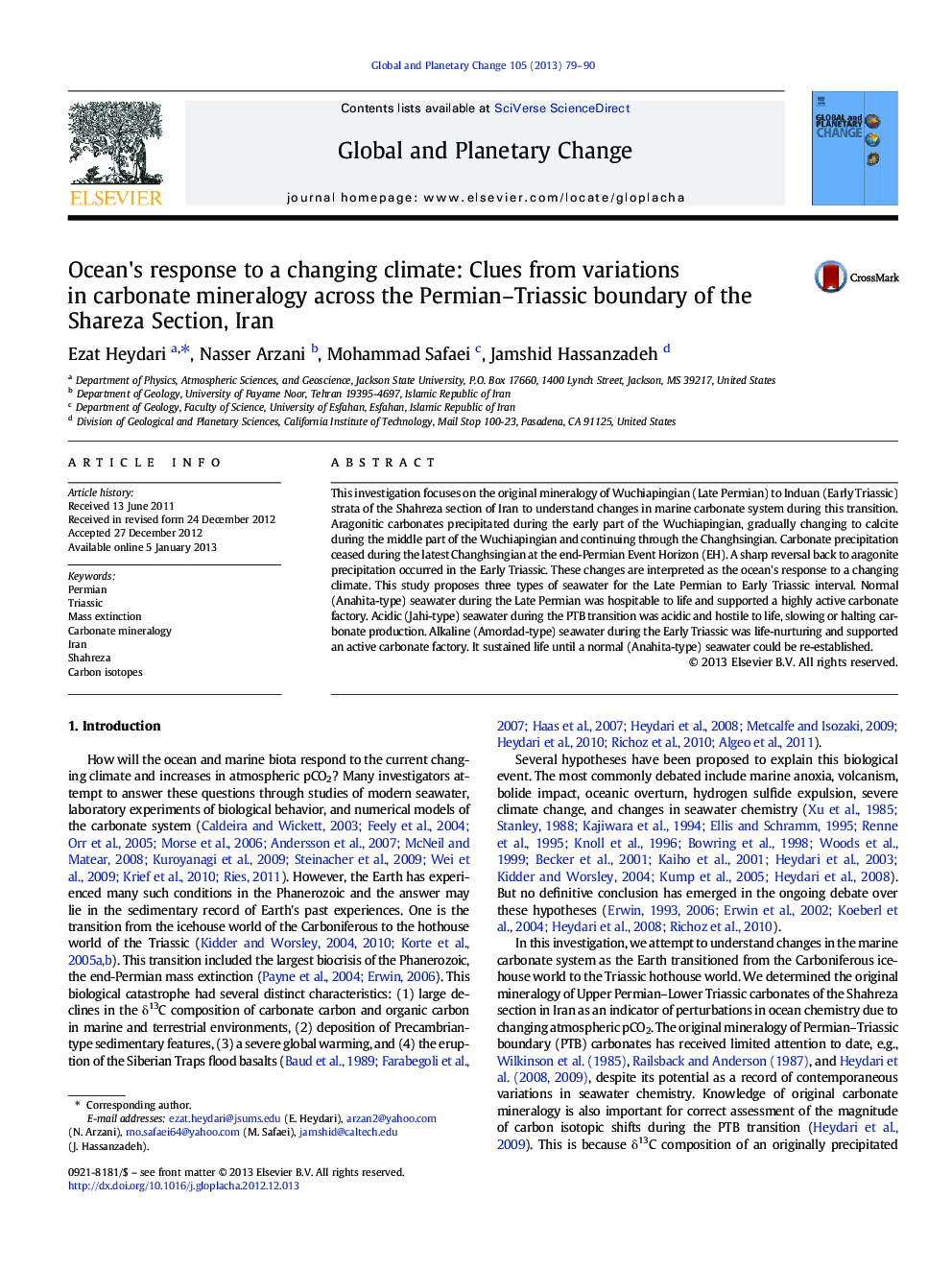| Article ID | Journal | Published Year | Pages | File Type |
|---|---|---|---|---|
| 4463604 | Global and Planetary Change | 2013 | 12 Pages |
This investigation focuses on the original mineralogy of Wuchiapingian (Late Permian) to Induan (Early Triassic) strata of the Shahreza section of Iran to understand changes in marine carbonate system during this transition. Aragonitic carbonates precipitated during the early part of the Wuchiapingian, gradually changing to calcite during the middle part of the Wuchiapingian and continuing through the Changhsingian. Carbonate precipitation ceased during the latest Changhsingian at the end-Permian Event Horizon (EH). A sharp reversal back to aragonite precipitation occurred in the Early Triassic. These changes are interpreted as the ocean's response to a changing climate. This study proposes three types of seawater for the Late Permian to Early Triassic interval. Normal (Anahita-type) seawater during the Late Permian was hospitable to life and supported a highly active carbonate factory. Acidic (Jahi-type) seawater during the PTB transition was acidic and hostile to life, slowing or halting carbonate production. Alkaline (Amordad-type) seawater during the Early Triassic was life-nurturing and supported an active carbonate factory. It sustained life until a normal (Anahita-type) seawater could be re-established.
► Originally aragonite carbonates formed until the middle of Wuchiapingian in the Shahreza Section of Iran. ► Calcite carbonate formed in late Wuchiapingian to the end of Changhsingian. ► Originally aragonite carbonate precipitation began during Early Triassic. ► Changes in carbonate mineralogy were due to ocean's response to a transit from an icehouse world to a greenhouse world.
